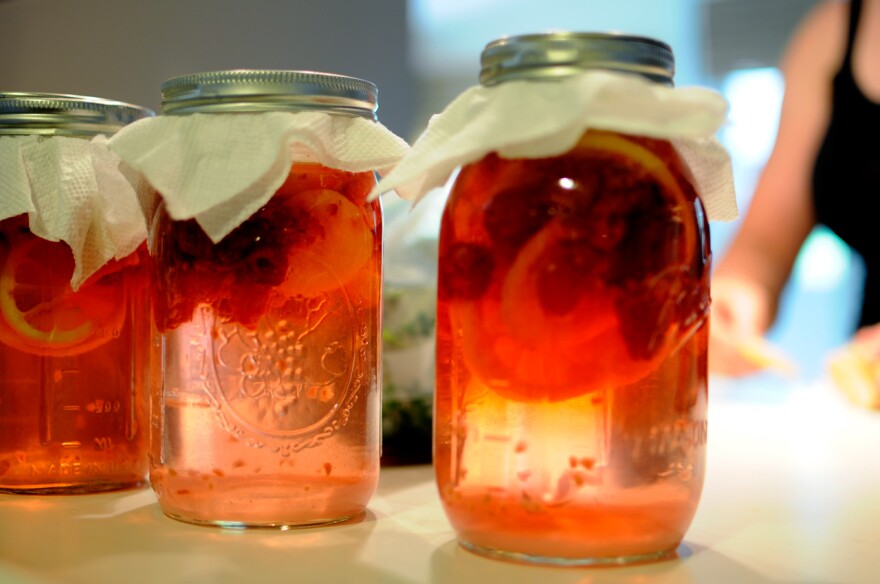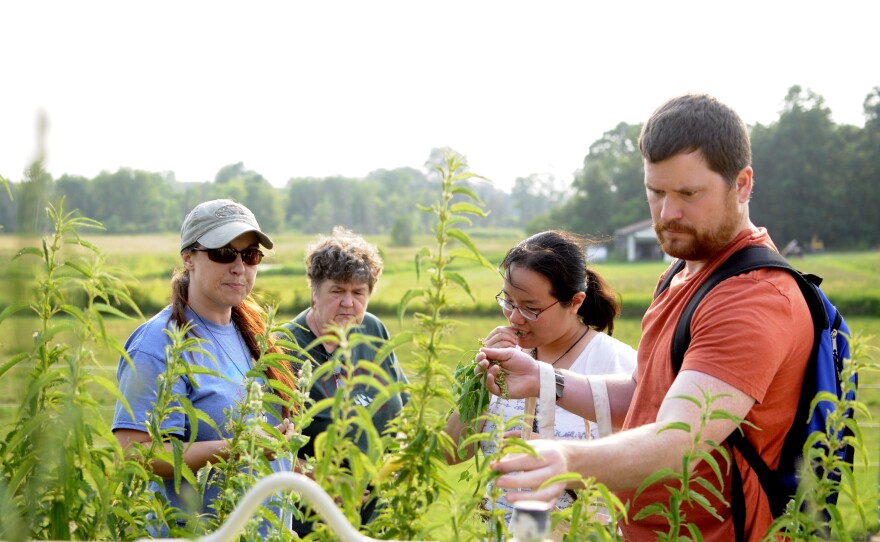Rewind a few thousand years to a time before grocery stores existed. You would have gotten a lot of your food by finding it out in the wild.
Foraging is no longer a necessary skill … but some people like to do it as a hobby. Rachel Mifsud is one of those people.
Pick any plant and she'll will tell you what it is, what it tastes like, and the best way to cook it.
She shares that knowledge through a series of "Foraging 101" classes, through her business: "Will Forage for Food."
"This is chicory," she explained at recent class, pulling off a leaf and holding it out for everybody to see. "It’s great plant to learn because it tastes really good in coffee and when you roast it and it smells like vanilla chocolate in your oven.
"The class met on a horse farm just outside of Northville, the property of one of her students parents. The fenced-in pasture is just off of a dirt road lined with tangled bushes and a few flowers.

Day lilies, Mifsud explains later. They're edible too, but they might make your mouth tingle a little.
Classes start with a lecture, like "Identifying Leaves," and then the class heads out to see what they can find, carrying with wicker baskets. Mifsud also carries a piece of flint to cut into tough stems.
Each student has a different learning tactic. One woman dutifully takes photos of every single plant Mifsud points out, and writes the description and uses into a black composition notebook. Judy Mathews takes a different approach. She munches on everything she finds, sometimes before Mifsud has deemed it safe.
Mathews said learning how to find her own food is empowering.
"It’s a lot of self confidence that builds within myself," she said.

On the menu today: nettles, wild raspberries and the so-called “toothache” plant.
“We’ll let Judy do it since she’s already eaten things," Mifsud joked about trying the toothache plant. "If you take this and stick it in your mouth it won’t hurt you it’ll actually give you a numb feeling."
Mifsud learned it all as a kid.Her parents lived on seven acres out in the country and camping trips always included meals made from foraged food.

She said it’s hard to explain how to tell the difference between edible plants and something that could kill you but once you’ve learned it, you just know it, the same way you just know the difference between a cucumber and a zucchini.
"They’re long, they’re green, they have a little nub at the end, but to those of us who know a cucumber and zucchini they totally look different and you pick it up and you know exactly what it is," said Mifsud.
It just takes a lot of practice and that’s what Mifsud is offering through her classes.
They started as one-off occasions, but grew into multi-week workshops and now a full-blown business.
But Mifsud’s larger goal isn’t making money or even teaching. It’s building a community around foraging and a homesteading lifestyle, which is something that takes a team … but isn’t all too common these days.

“As people come in I’m building a trade network and when you’re foraging living a homesteading lifestyle bartering and trading is extremely important," she said. "There’s no way a single person or even a family can do everything themselves. You have to trade with other people.”
She says everyone has something to contribute, whether it’s a few acres to forage on, a dish to bring to a food swap or just by being ready to help canning some wild raspberries, like a few Foraging 101 students were on a recent Tuesday evening.

They gathered to help prep a recent harvest from Mifsud's garden. It took five hours. They made kale chips, pickles and relish; canned raspberry jam, squash stew and pesto. They even made raspberry soda.
And for those who were willing to put in the time, the reward was pretty sweet. Each helper left with a box of a bit of everything to take home.










